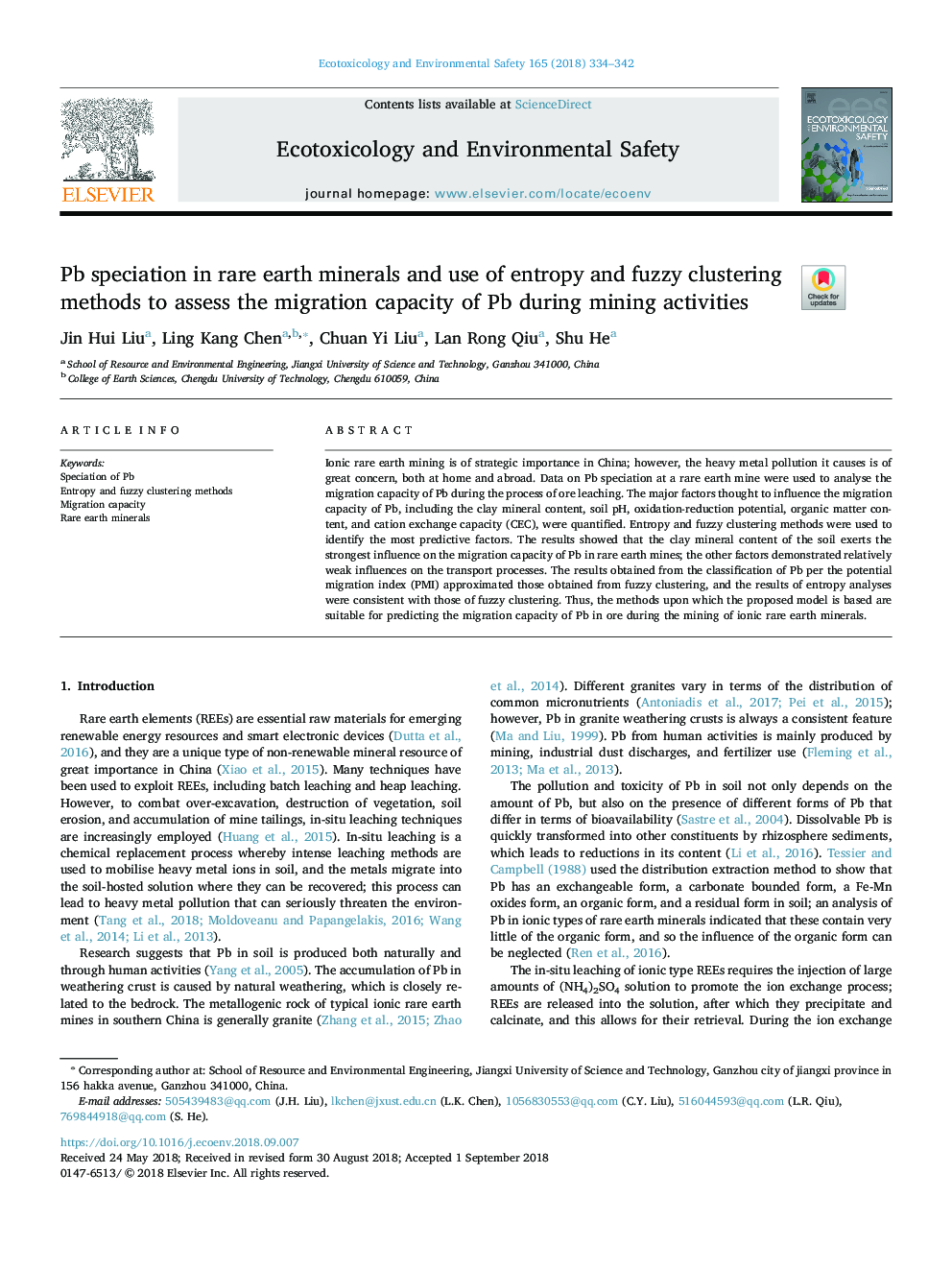| Article ID | Journal | Published Year | Pages | File Type |
|---|---|---|---|---|
| 10144529 | Ecotoxicology and Environmental Safety | 2018 | 9 Pages |
Abstract
Ionic rare earth mining is of strategic importance in China; however, the heavy metal pollution it causes is of great concern, both at home and abroad. Data on Pb speciation at a rare earth mine were used to analyse the migration capacity of Pb during the process of ore leaching. The major factors thought to influence the migration capacity of Pb, including the clay mineral content, soil pH, oxidation-reduction potential, organic matter content, and cation exchange capacity (CEC), were quantified. Entropy and fuzzy clustering methods were used to identify the most predictive factors. The results showed that the clay mineral content of the soil exerts the strongest influence on the migration capacity of Pb in rare earth mines; the other factors demonstrated relatively weak influences on the transport processes. The results obtained from the classification of Pb per the potential migration index (PMI) approximated those obtained from fuzzy clustering, and the results of entropy analyses were consistent with those of fuzzy clustering. Thus, the methods upon which the proposed model is based are suitable for predicting the migration capacity of Pb in ore during the mining of ionic rare earth minerals.
Keywords
Related Topics
Life Sciences
Environmental Science
Environmental Chemistry
Authors
Jin Hui Liu, Ling Kang Chen, Chuan Yi Liu, Lan Rong Qiu, Shu He,
